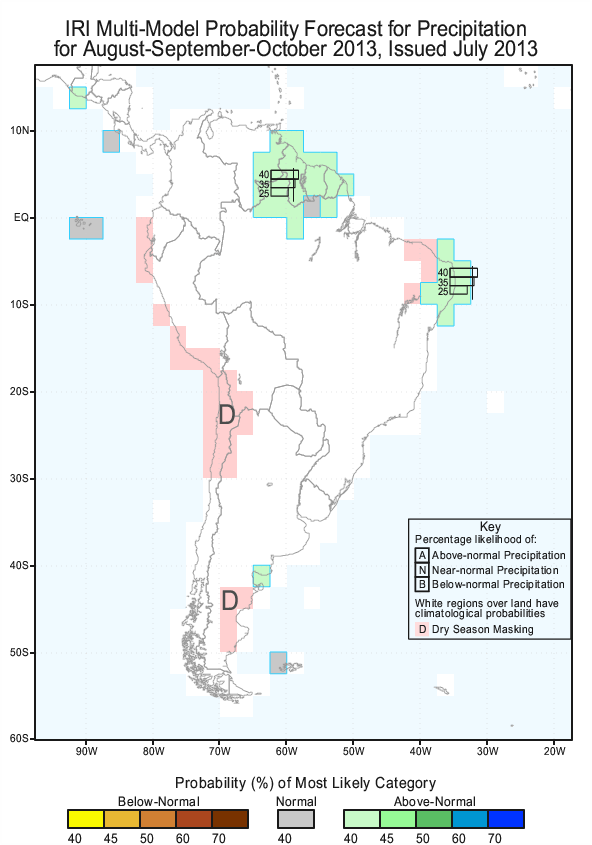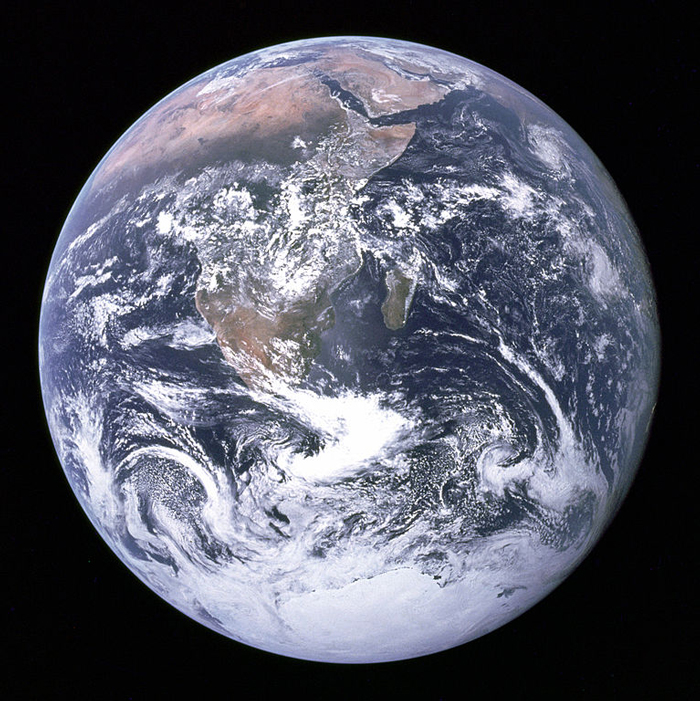| August 5, 2013 | No. 63 |
July 2013
I posted the July 2013 weather data on August 1 for the Palmira Weather Station. At the Palmira Station we had a total of 7.50 inches of rain with 18 days with some rain and 13 days with no rain. Our average winds were 3.2 mph. The Average Temperature was 83.3 F with a Minimum of 59.5 and a Maximum Temperature of 83.3 degrees F. Our average humidity was 68.8 percent. We had a total of 30.14 inches of rain for the year at the end of July.
Here are the totals for July of 2013 as reported from different areas in the District of Boquete:
Rainfall for July 2013 |
||
Area |
Contributor |
Inches |
| El Santuario | Terry Zach | 8.40 |
| Los Naranjos | Craig Bennett | 6.58 |
| Jaramillo Abajo | Sela Burkholder | 12.44 |
| Jaramillo Arriba | Steve Sarner | 7.61 |
| Lucero (Cielo Paraiso) | Michael Mullin | 15.26 |
Los Molinos |
Fred Donelson |
14.69 |
| Palmira Arriba | Lloyd Cripe | 7.50 |
The rain for July was not the lowest we have recorded at the Palmira Station. In July of 2012 we recorded 6.47 inches. However, our total for the year at the end of July, 30.14 inches, is the lowest total we have recorded since we started recording data in 2007. However, so far, this is the driest rainy season we have recorded. Will we start getting more rain? I don't know. Although I have personally been enjoying less rain this year, I am starting to worry about our water supplies and agriculture. We have a 140 foot deep well that provides our water. It is still producing water, but will it continue? Our creek (Cedar Creek) on the east side of our finca is the lowest we have ever seen it. Since we bought the property in 2002 it has never gone dry. Right now it is trickling along and making me wonder if it will continue. It is certain that we are having to this point a drier year than we normally have during the rainy season.
I assume that you know that you can check the monthly and annual rainfall since 2007 at the website in the Climate Section. All you have to do is go to the section and scroll down through the data in the yearly tables. I mention this because some of the questions that come my way imply that many don't know this. The information is all there for the looking. You just have to look for and pay attention to the detail.
Again, don't forget to report your earthquake experiences. This is useful to those researching earthquakes in our area. You can find the report form at this link or at the Earthquake Page on the website.
Check out the latest ENSO Cycle Report to see that we are still in a neutral condition and it is predicted that this will continue through the summer. You can get yourself educated as to what all of this means at this NOAA website. If you want to earn a graduate degree on the topic go here.
The IRI (International Research Institute for Climate and Society - select South America from the Region menu) is not reporting that our area will have above average precipitation for the months of August 2013 through October of 2013. Here is their current graphic.

You all know that I have an interest in bird photography. In fact I have been interested in general photography most of my adult life. Last month a photographic event occurred that I believe is one of the greatest of my lifetime. I think it is an incredible photo that helps us put things in perspective. But before I share it with you, I want to share with you the greatest photo of my lifetime.
On December 7 of 1972, a human being took the first photo ever of our planet at 28,000 miles from the earth from the Apollo 17 spacecraft. It is a photo of the whole illuminated earth. Conditions had to be just right and the person had to click the shutter at the right moment. Satellites had taken some photos, but not a human being. It has been called the "Blue Marble" and "is the most widely distributed image in human history." I think it symbolizes many things. There we are hanging in black space with no strings attached. The atmosphere looks less than paper thin. The weather systems are doing their routines. Things both significant and insignificant are seen in this photo. The sum total of our evolution and technical knowledge along with our cultural abilities to organize and work together were all necessary for this photo event to occur. This did not happen by accident. We can take pride in this. On the other hand, this view of earth does not reveal one moving creature. I think the perspective reveals our fragility and insignificance. To me this is the greatest photo that humans have ever taken.

Now back to last month.
On July 19, 2013, the wide-angle camera on the NASA Cassini spacecraft took a photo of our Earth and moon along with Saturn's rings at over 898,000,000 (898 million) miles away from the earth. Although the photo was not taken by a human being, it was taken by equipment made and operated by human beings. Think about the meaning of this photo event. I think it is a big deal in my lifetime and merits some meditation. I am glad I lived long enough to see it.
Linda Silker, a Cassini project scientist at the NASA Jet Propulsion Laboratory said, "We can't see individual continents or people in this portrait of Earth, but this pale blue dot is a succinct summary of who we were on July 19...Cassini's picture reminds us how tiny our home planet is in the vastness of space, and also testifies to the ingenuity of the citizens of this tiny planet to send a robotic spacecraft so far away from home to study Saturn and take a look-back photo of Earth."
Well, back to Earth and life in Boquete. To rain or not to rain? That is the question. I wish I had the answer. I am hoping for some more moisture, but can't remember where I put the umbrella. Guess I'll not worry about it and try to put it all into perspective. At least we aren't living on Venus!
Lloyd Cripe

